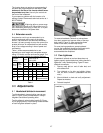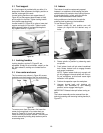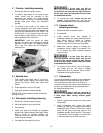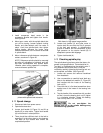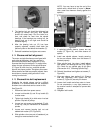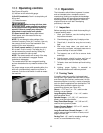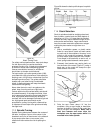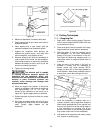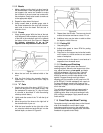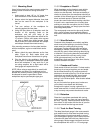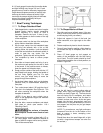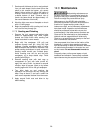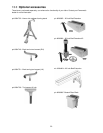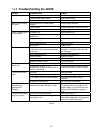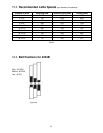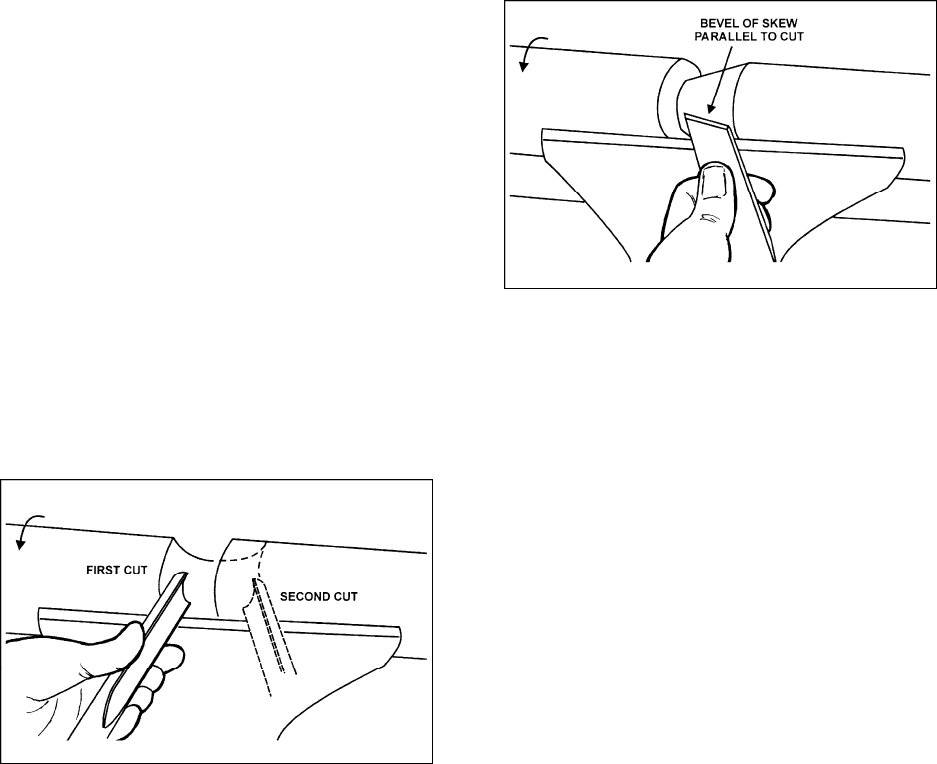
25
11.5.2 Beads
1. Make a parting cut for what is to be a bead to
the desired depth. Place the parting tool on the
tool support and move tool forward to make
the full bevel of the tool come into contact with
the workpiece. Gently raise handle to make cut
to the appropriate depth.
2. Repeat for other side of the bead.
3. Using a small skew or spindle gouge, start in
the center between the two cuts and cut down
each side to form the bead. Roll the tool in
direction of cut.
11.5.3 Coves
1. Use a spindle gouge. With the flute of the tool
at 90 degrees to the workpiece, touch the point
of the tool to the workpiece and roll in towards
the bottom of the cove. See Figure 41. Stop at
the bottom; attempting to go up the
opposite side may cause the tool to catch.
Figure 41
2. Move the tool over the desired width of the
cove.
3. With the flute facing the opposite direction,
repeat step 1 for other side of cove. Stop at
bottom of cut.
11.5.4 "V" Cuts
1. Use the long point of the skew. (NOTE: Do not
press the long point of the skew directly into
the workpiece to create the "V"; this will result
in a burned or burnished "V" with fibers being
rolled up at both sides.)
2. Lightly mark the center of the "V" with the tip of
the skew.
3. Move the point of the skew to the right half of
the desired width of your cut.
4. With the bevel parallel to the right side of the
cut, raise the handle and push the tool in to the
desired depth, as shown in Figure 42.
Figure 42
5. Repeat from the left side. The two cuts should
meet at the bottom and leave a clean "V" cut.
6. Additional cuts may be taken to add to either
the depth or width of the cut.
11.5.5 Parting Off
1. Use parting tool.
2. Adjust lathe speed to lower RPM for parting
through a workpiece.
3. Place tool on tool support and raise the handle
until it starts to cut and continue to cut toward
center of workpiece.
4. Loosely hold on to the piece in one hand as it
separates from the waste wood.
11.5.6 Sanding and Finishing
Leaving clean cuts will reduce the amount of
sanding required. Move the tool support out of the
way, adjust the lathe to a low speed, and begin
with fine sandpaper (120 grit or finer). Coarser
sandpaper will leave deep scratches that are
difficult to remove, and dull crisp details on the
spindle. Progress through each grit without
skipping grits (for example, do not jump from 120
grit to 220 grit). Fold the sandpaper into a pad; do
not wrap sandpaper around your fingers or the
workpiece.To apply a finish, the workpiece can be
left on the lathe.
Turn off lathe and use a brush or paper towel to
apply the finish. Remove excess finish before
restarting lathe. Allow to dry and sand again with
320 or 400 grit sandpaper. Apply second coat of
finish and buff.
11.6 Face Plate and Bowl Turning
Face plate turning is normally done on the inboard
side of the headstock over the bed. Larger
workpieces must be turned on the outboard side
(remove tailstock and tool support base, and slide
headstock to opposite end of bed).



